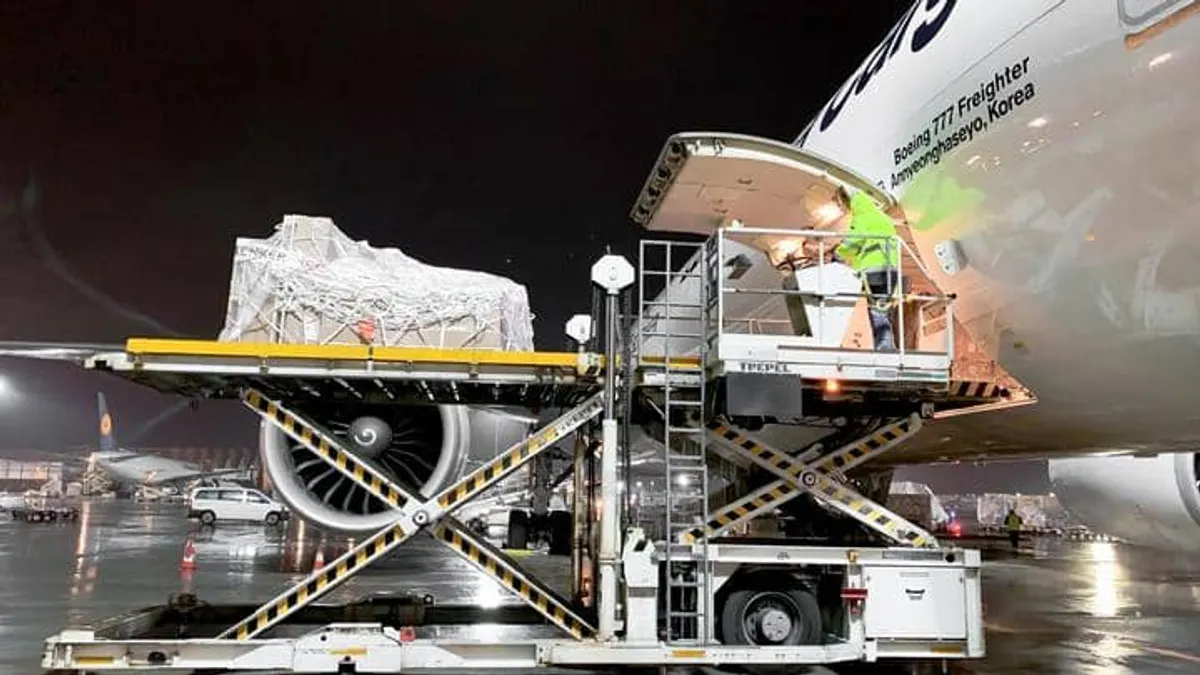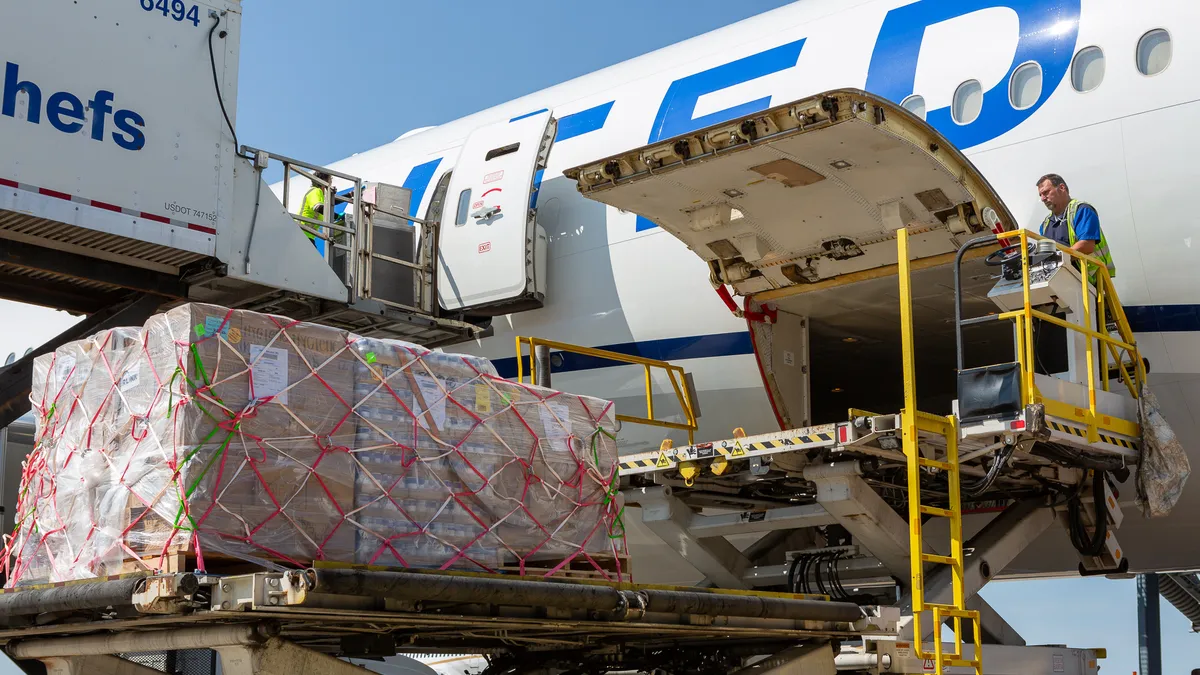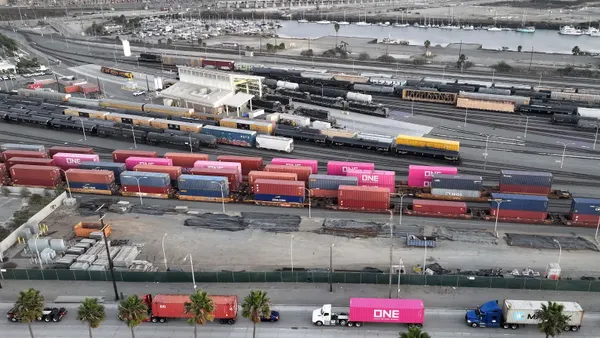It’s been more than a month since the ELD mandate took effect. Most trucks are required to have an active electronic log, with drivers abiding by the hours of service (HOS) and other regulations.
As drivers get used to the new monitoring system, load prices are increasing, truck stop parking spots are in high demand and loading docks are sources of increased tension and confusion as drivers watch the clock to load or unload – and move their truck — within the appropriate time frame.
It seems as though the ELD was implemented at a bad time
Around Dec. 18, when the ELD mandate took effect, spot market pricing jumped up a lot for reefer and van prices, compared to the same period in past years, said Noel Perry, chief economist at truckstop.com.
“I could find no other explanation for it,” other than the ELD mandate, he said. He’ll do another analysis at the end of January, but the data was suggestive that there was at least an emotional effect from the mandate.
A number of other factors are affecting pricing and capacity issues. The economy picked up, with customers posting more loads, but there’s no increase in truck supply or drivers.
“We know that the prices people are asking and posting are considerably higher than they were a month ago. Truckers think they can get more and the shippers and brokers are asking for a lot more (capacity) just in case,” Perry said.
The economy is better than it’s been in seven or eight years, and volume has greatly risen over the past year, said Elliot Ballen, operations manager of L&A Transport in New Jersey.
Plus, the mandate decreased driver productivity. Drivers are on the road fewer hours than allowed, as there’s a rush to find parking as they get near truck stops, with parking shortages reported.
“When they get to the nine-ish hour limit, they’re looking for parking. Everyone is gun shy,” said Ballen. “If they see that the next travel center is in 12 miles, they might see that parking spots are filling up. If the next one is filled or there are more local roads, they’ll be stuck.”
That may ease up once drivers get used to the new system, but everyone is driving fewer hours to follow the rules.
Fewer driving hours, plus the truck shortage, is not a good combination. Prior to the ELDs, some drivers cheated, driving more hours than logged or allowed. Now that they’re monitored, their productivity has dropped.
The driver shortage is muting the ELD's advantages
With a tight market and decreased productivity, pricing has risen. In the spot market for the week ending Jan. 20, 10 loads waited for every available truck, according to DAT Solutions data, reported in the Wall Street Journal.
Perry estimated that the ELD mandate is lowering productivity by around 3%.
“You’d expect rates would go up by at least 3%. They’ve been up by 20% for months,” he said.
The driver and trucker shortage is partly to blame.
Some companies are considering surcharges based on the ELD’s business impact. Ballen said they’ve been thinking about a surcharge for certain routes, but haven’t yet decided.
“When you go to Massachusetts from New Jersey, you’re real close to the 11 hours of driving. Now that everything is electronic, you can’t take a chance. You’re going to have to decide ahead of time whether to have your driver stop to get a motel,” he said. “The northeast is a tough area. South of southern Connecticut, there’s no place to stop. You have to make a decision ahead of time, to put up a driver in a motel. It will end up raising costs.”
You’d expect rates would go up by at least 3%. They’ve been up by 20% for months.

Noel Perry
Chief Economist at truckstop.com
Drivers need to err on the side of caution, as they can’t predict traffic. Before the ELD, they might take a shot at making it on time.
“I had a guy the first week run six minutes over,” Ballen said.
He told the driver to stop, and they sent another driver to finish the route and give him a car to get home.
But that means having extra drivers available, who have finished their mandated rest time. It also means their HOS clock starts running, even if moving the truck is a short drive.
Ballen isn’t sure yet if swapping out drivers in regional hauls will increase costs, and he’s hoping it won’t happen frequently. They’ll only swap out drivers if they’re within an hour of the terminal.
Otherwise their local and regional drivers will need to find a motel. Cross-country drivers sleep in their trucks. They’ll watch it for a few months, and if it’s only an occasional problem, they won’t raise rates.
How drivers are coping
For drivers, getting accustomed to the electronic logs is a mixed bag.
“My drivers are not used to signing in and making changes on their tablets every time they change a job function,” said Ballen. “Before, you did it every two hours. Now if they stop and they don’t do it, it shows that they’re still driving. They have to be much more exact.”
Some of the big fleets have reported driver satisfaction, said Perry. “The reason is that when they were forced to cheat, they couldn’t log it so they couldn’t get paid for it.”
Drivers aren’t being forced to work overtime and they’re now getting paid for every mile.
Not all drivers are happy with the change, for a variety of reasons. When DAT Solutions asked drivers their thoughts after the mandate took effect, they received more than 220 comments, most of them negative.
They included:
- “I didn’t get into this business to punch a time clock. 25 years in this industry, thinking of hanging it up. Too much bs and not enough money anymore.”
- “I use to cheat on my logs like many others for SAFETY reasons which can not be addressed by HOS regulations which is to get rest when I was actually tired. Period! End of story. For one simple reason... The government can't regulate sleep with an ELD to tell a person when its time to be sleepy.”
- “Yes, it has greatly impacted our business. Shipper and receivers are not ready at all. We had to cancel several loads already due to time constraints and shippers not working efficiently. I'm not going to take any loads without factoring in money for sitting and delays.”
The ELD saves time by automating paperwork
Ballen is seeing advantages in the office. Someone from his office spent four to five hours a week manually going through every driver’s paper log to match up fuel receipts and taxes. Now it’s all done electronically and they can format reports to automatically run for them.
It will also give carriers better information.
I didn’t get into this business to punch a time clock. 25 years in this industry, thinking of hanging it up. Too much bs and not enough money anymore.

A driver comment in response to a DAT Solutions query
“For the first time, people will have records of what happens at every customer stop and how many loaded and empty miles there were for every load,” Ballen said. “The smart guys are pricing more effectively and negotiating more strictly with their customers.”
Ballen can also monitor his drivers to plan who can take different loads, depending on their location and how many hours left they have in their 70 hour workweek. He can see that a driver has 52 minutes left on their HOS, but won’t make it to their destination in time. He can also see that his driver was sitting for four hours, due to an icy road closure. That data helps him plan for efficiency.





















